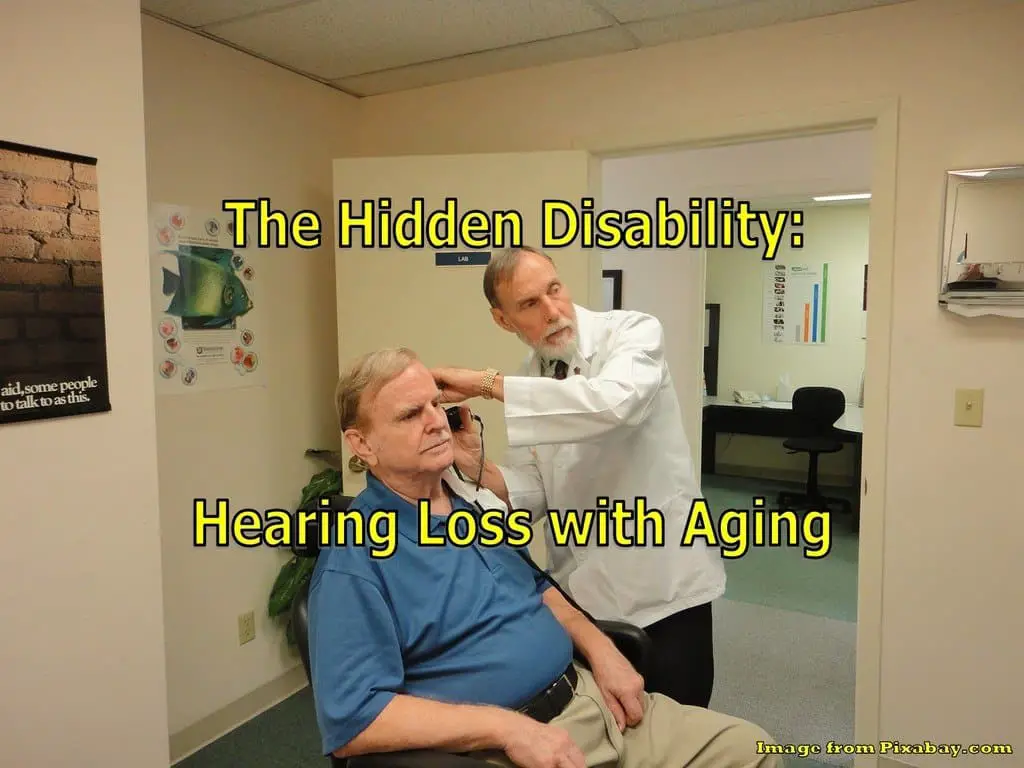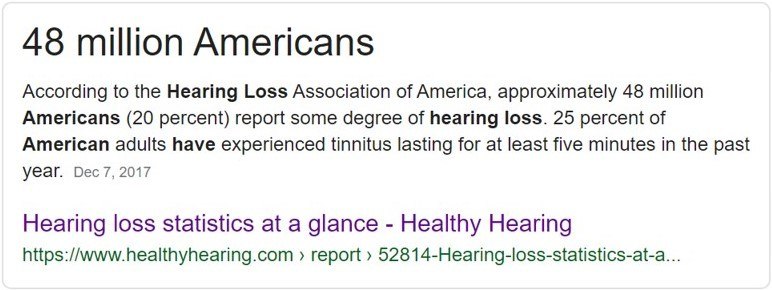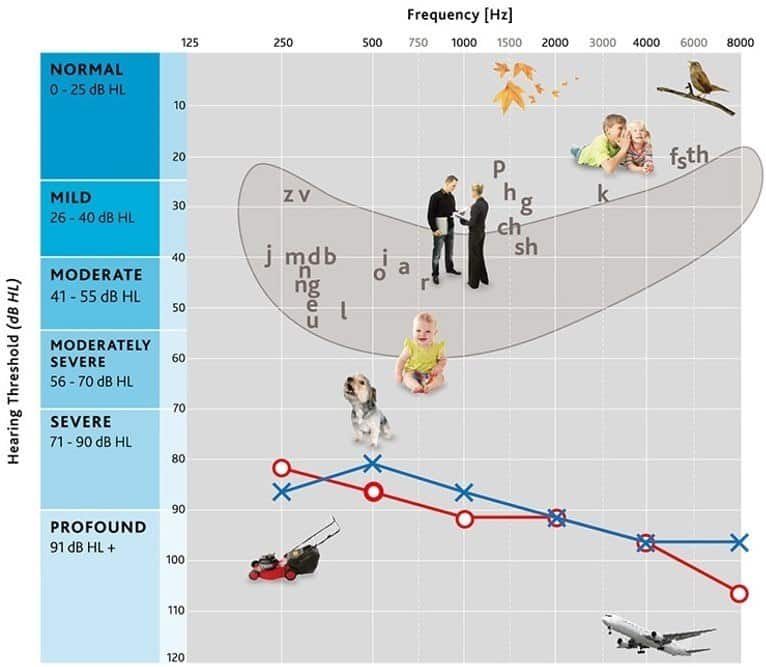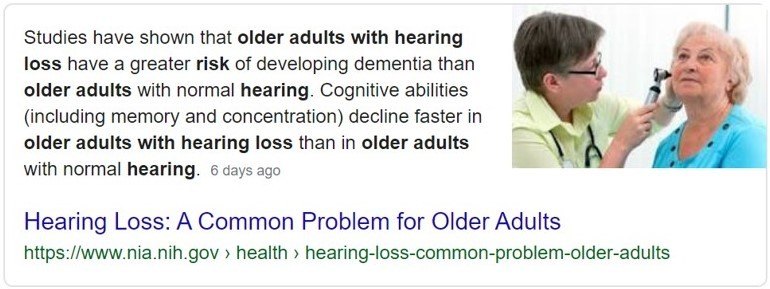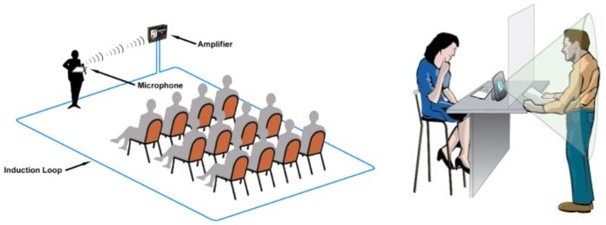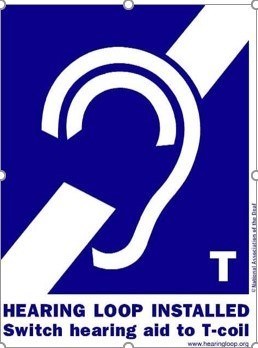Maybe you are concerned that your ears aren't as sharp as they used to be or your partner, parent, or other loved one has difficulty.
Often referred to as the “Hidden Disability”, hearing loss associated with aging is far more widespread than most of us are aware.
In fact, it is one of the most common conditions affecting about one in three Americans between the ages of 65 and 74.
Nearly half of those 75 and older will have difficulties. While it is normal for older adults to be “hard of hearing”, this contributes to a host of problems in social interaction and even, potentially, leading to social isolation.
While hearing aids help with hearing loss with aging, they are not the cure all. They amplify all sounds and in a noisy environment become less effective. Secondly, they are expensive and many people that would benefit from them simply cannot afford them.
The human ear is an acoustic engineering marvel. We are able to filter out noise and still differentiate words as similar as fought and thought.
Without even thinking about it, you pick up the difference between a guitar and a violin. Even whether the sound is coming from behind, in front, or off to the side of you.
The Hearing Loss Issue
Hearing impairment is far more widespread than most of us are aware. According to the Hearing Loss Association of America approximately 20% (48 million) Americans report some degree of loss and have experienced tinnitus or other symptoms.
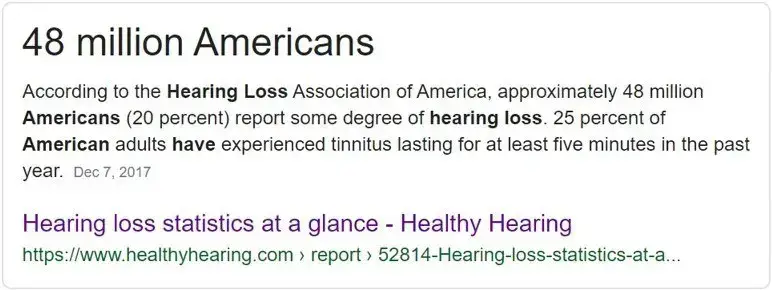
Usually, hearing loss is a gradual process that sneaks up on most of us over the years. To compensate, we turn the TV up a little louder and pay more attention when we speak with someone.
Particularly in noisy environments, it is completely normal to miss some of what is said. As long as you catch the gist of what is meant, all is good.
Even worse are those public announcements over PA systems or drive-thru windows. Even those with sharp ears often find them garbled and incomprehensible.
It only becomes an issue when you are unable to comprehend what someone is saying. Too much information is missed and you are unable to piece together the conversation.
No one wants to appear stupid by continually asking others to repeat themselves or speak louder. Thus, it is natural to pretend to have heard everything even if you only caught a portion of what was said.
This is why hearing loss is often referred to as a hidden disability. Furthermore, it is easy to make excuses or even deny that you have an issue.
Rather than suffer the embarrassment and frustration, it is easier to avoid conversing with others.
Auditory Loss Facts
According to the National Institute of Deafness and Other Communication Disorders approximately 28 million adults (ages 20 - 69) would benefit from some sort of assistive aid.
Their findings reflect:
>The average age of the 1st time hearing aid wearer is 70.
>A large number of people wait 15 years before purchasing one.
>Of the 28 million people that could benefit, fewer than 16% use them.
>Of those age 70 and older that would benefit, fewer than 30% use them.
>The cost of a hearing aid device ranges from $1,000 to $4,000 depending upon the technology.
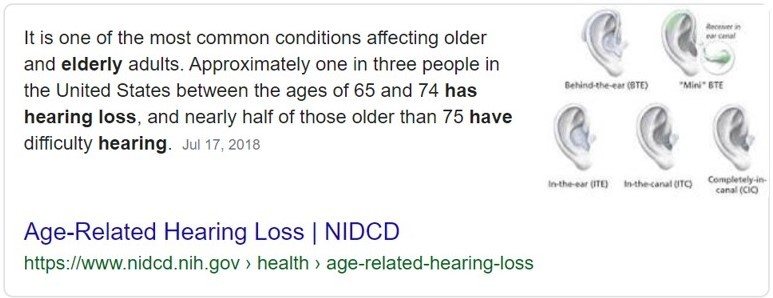
Causes of Hearing Loss
Growing up, there was little awareness about the risk of hearing loss due to loud noises and/or extended exposure. When the Walkman first came out, most of us ran out and purchased one.
It was cool to crank up our favorite music up and, unwittingly, damage our auditory range. Actually, the young generations are following in our footsteps with even more powerful personal listening devices.
You may have also attended rock concerts and afterwards noticed your ears still ringing after the performance.
Long-term exposure to loud sounds irreparably damages the sensory hair cells in the ear. This has a cumulative effect that has likely diminished your auditory sense.
The majority of factory and shop environments utilize loud equipment creating a high-level of background noise.
Men traditionally operate lawnmowers and power equipment that produce high noise levels. As a result of years of noise exposure, males are twice as likely to experience this type of impairment.
In addition to a lifetime of noise exposure, there is also hearing loss with aging or presbycusis. Unfortunately, it is part of getting older and most of us will experience it more and more.
Although there are several causes, the most frequent cause is the inner ear changing as we age. Less common are changes to the middle ear or nerve pathways.
The best way to describe it is as similar to how our eyesight changes. Fine print becomes almost indecipherable without reading glasses (or a magnifying glass). In a dimly lit restaurant, the menu might as well be written in Mandarin.
Other factors that contribute include injury, viral infections, shingles, some medications, meningitis, and diabetes.
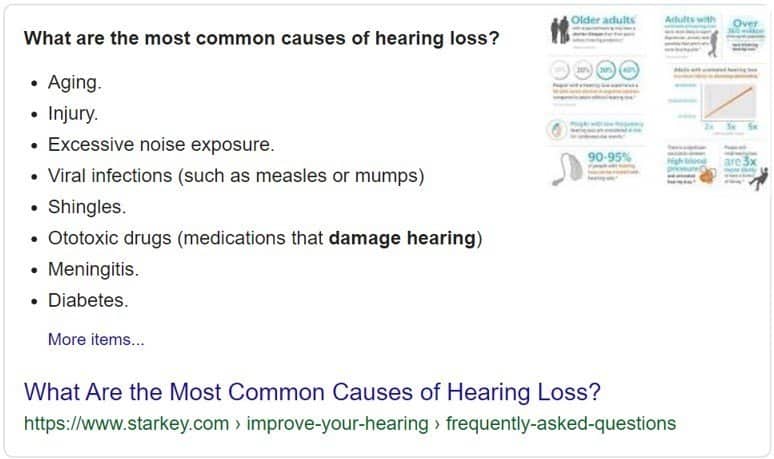
Levels of Auditory Loss
If you are experiencing difficulties, an audiologist can test and determine the severity of your loss. There are four levels defined as mild, moderate, severe, and profound.
Furthermore, hearing loss may vary for different ranges of sound. For instance, you might have mild loss for low pitch sounds and moderate loss for higher pitch sounds.
>Mild - If you find yourself frequently asking people to repeat themselves or speak up, you may have mild hearing loss. it would be almost like listening with your fingers in your ears. Sounds that are quieter than 25 to 45 dB become lost. Normal conversations can still be heard, yet you may struggle when there is background noise or when more than one person is speaking. There are many hearing aids that can amplify these lower dB ranges and minimize listening problems. These may be small in the ear or behind the ear models.
>Moderate – When you are only picking up some words or portions of words, it has now become moderate. In short, you can hear but have difficulty understanding a normal conversation. Sounds in the range of 40 to 75 dB are the quietest that you will be able to hear. The appropriate aid will need to be fitted and likely be a higher end device than for mild loss.
>Severe – This level of loss means everyday sounds are not distinguishable, such as people talking, the TV, or the phone ringing. This means you are not detecting below the 75 to 90 dB tone. This higher range will require the most expensive aids or a cochlear implant.
>Profound – At this fourth level of loss, sounds such as airplane engines, first responder sirens, and loud power equipment (lawn mover or chainsaw) would be the only ones in your range of sound. Effectively, 90 dB is the lowest tone heard which does further damage. A cochlear implant would likely be highly recommended.

Hearing Loss with Aging and Seniors
It is easier to keep to yourself than suffer the indignity and embarrassment of not being able to communicate with others.
This directly impacts your quality of life and can lead to feelings of loneliness and social isolation.
Social interaction and connection with family and friends is critical to your very happiness. This is further explained in The Most Important Ingredient for Retirement Happiness.

Hearing Aids Technology
Without hearing aids countless millions of people would be left in the dark, so to speak. Although not a perfect solution, they provide the ability to hear again and interact with others.
Technologically, they continue to advance with ongoing research improving sound quality and making these devices more comfortable.
Older analog technology amplified all sounds and was unable to filter out or reduce unwanted noise.
Modern digital aids convert sound into electronic information. Loud ambient sounds can be reduced with only the major signal (speech) amplified.
By delivering improved sound quality, the wearer can hear better in noisy environments. Most users require several visits to an audiologist to properly fine tune their hearing aids.
There are a vast array of styles available to meet individual requirements and levels of loss. Getting an auditory exam and discussing you best options with a qualified specialist is highly recommended.
Disadvantages of Auditory Aids
The greatest disadvantage is their cost. Unfortunately, most healthcare plans, either, do not cover them or only a portion of the cost.
When hearing loss with aging occurs, many retirees find themselves unable to afford them. In addition, these are not a one-time purchase.
The average lifespan varies from 3-7 years depending upon the style. Also, over time, things may continue to degrade requiring a more expensive hearing aid.
If you have not done so, it might be wise to set-up a health spending account (HSA) or other savings to cover the costs.
This will alleviate financial distress where you might find yourself in a position of being unable to afford them.
Most of us assume that these aids will fix the problem. After all, if we can put a man on the moon, surely, we can fully restore hearing. While they certainly help; at this time, they still have limitations.
Their basic function is to amplify sound. Even the latest and greatest devices do not provide the same quality as your own perfect ears.
In a relatively quiet environment, you should be able to clearly hear and participate in a conversation. In a noisy environment, that same conversation may become more problematic. In a lecture / theater environment, sounds from a distance are often lost.
Some of the side effects of poor quality or improperly fitted aids include:
>Headaches and tinnitus.
>Improper sound levels further damaging your ears.
>Discomfort, soreness, and skin irritation.
>Feedback and/or buzzing.
Hearing Aid Options
Technology continues to evolve with more options become available addressing functionality and comfort. The basic purpose is to amplify sound. Also, most have a “t-coil” ensuring you can use hearing loops (see below).
Some provide Bluetooth compatibility for integration with electronic devices. This can include your cellphone, computer, and even watching TV. One of the drawbacks with Bluetooth is increased battery drain.
For more information on hearing aids, Consumers Advocate has done extensive research and testing.
What are Hearing Loops?
An audio induction loop (also referred to as a hearing loop) is special antenna wiring that enables people with hearing aids to better pick up the audio source in public areas.
Most devices have a built in t-coil (telecoil) that will detect the sound signal while minimizing background noises. These are ideal in public areas or at retail / service counters.

Images from: Acoustic Loop Innovations

Audio induction coils are becoming much more widespread as government and business recognize the desirability to improve service. In some locales, legislation has passed promoting better accessibility and understanding. This image is the universal sign for hearing loops.
Where Can You Expect to Find Hearing Loops?
Although still relatively new, you may find the t-coil sign almost anywhere throughout your community. Imagine spending several hundred dollars to go to a theater production and still straining to understand it.
With your new hearing aids, you can clearly hear the people behind you commenting on the show. As well as the people in front of you whispering about where the washrooms are.
Yet, if the theater had installed these loops, you would be able to enjoy the performance with none of the other distractions.
With our aging population, theaters will soon find attendance dropping if audio induction coils are not in place and implemented.
Another example would be the public transit kiosk. The 18-year-old kid behind the window doesn’t seem to care that you can’t understand what he says over that stupid tinny speaker.
The background noise is horrendous and there is a long line behind you. It would just be so much easier if they had set up a hearing loop. Other situations where they are desirable include:
>Government and court rooms
>Public transit
>Educational facilities
>Places of worship
>Banquet and trade show facilities
>Ticket counter and information booths
>Hospitals and other medical facilities
Closing Thoughts
Hearing loss with aging will become a fact of life for the majority of us, especially from the age of 65 years and on. No one likes to admit they are getting old, yet it is something you cannot ignore.
It becomes a hidden disability as most people you interact with won’t even realize you can’t hear them.
Hearing aids are critical to remaining socially engaged, avoiding social isolation and living a rewarding and comfortable life. Make sure to take care of you as best you can!

